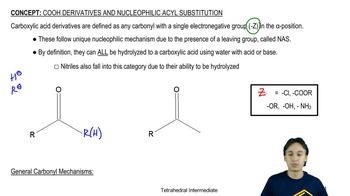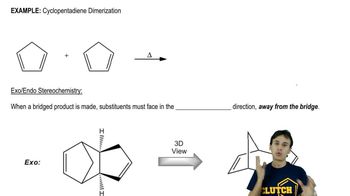What acyl chloride and amine are required to synthesize the following amides?
a. N-ethylbutanamide
b. N,N-dimethylbenzamide

 Verified step by step guidance
Verified step by step guidance Verified video answer for a similar problem:
Verified video answer for a similar problem:



 9:32m
9:32mMaster NAS - The Three Rules with a bite sized video explanation from Johnny
Start learning